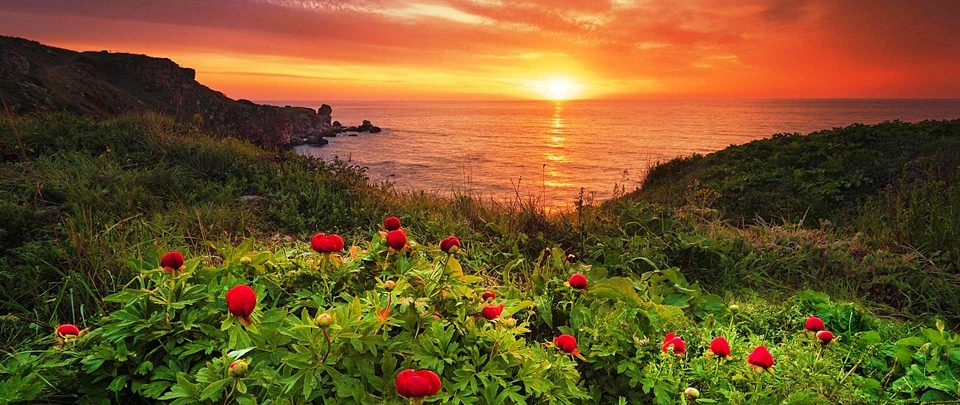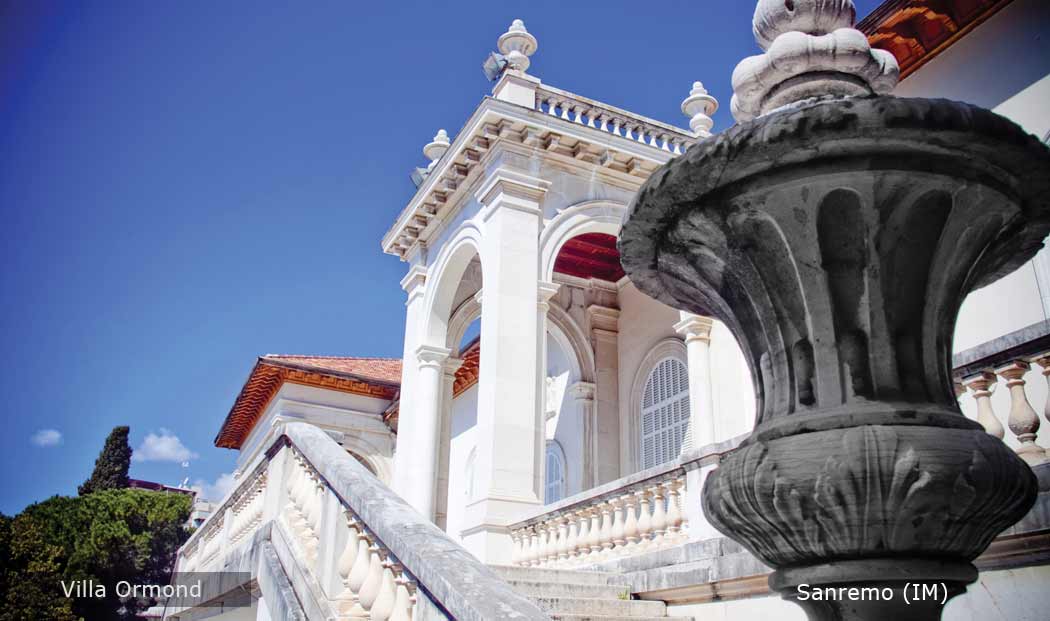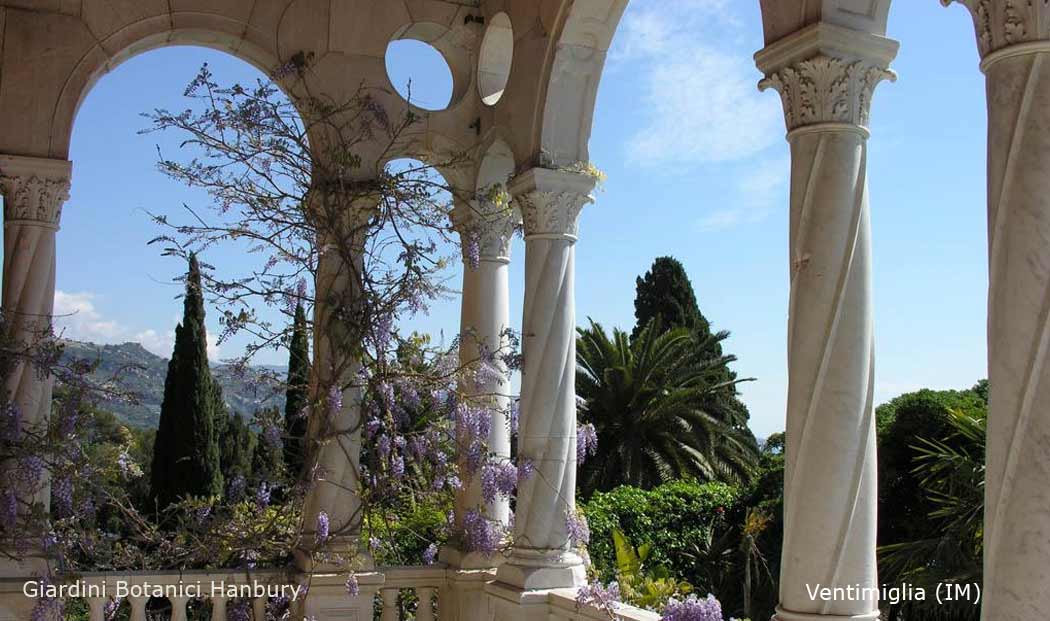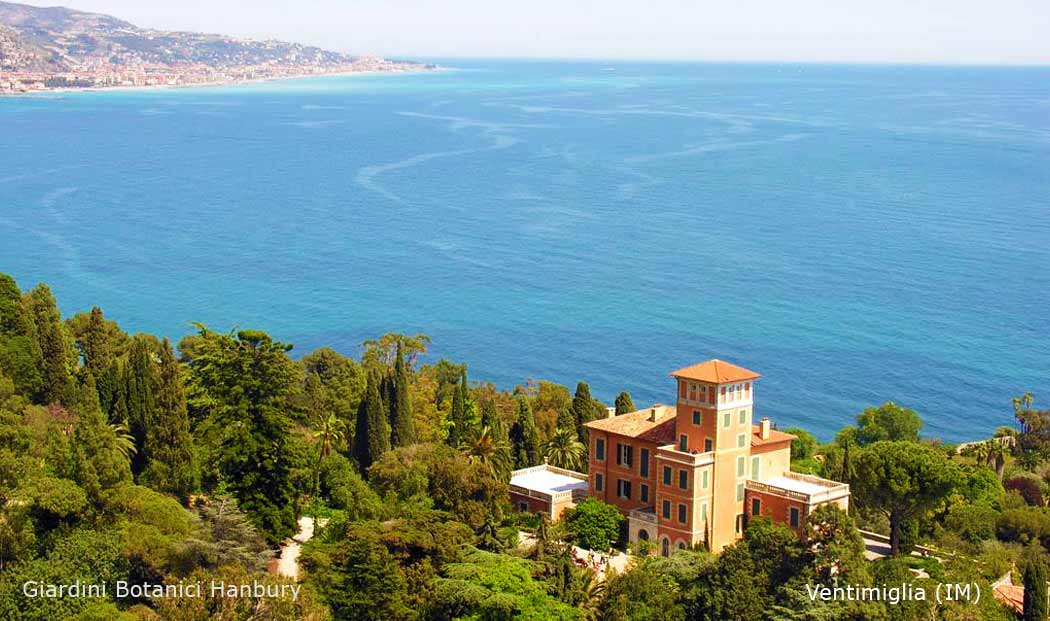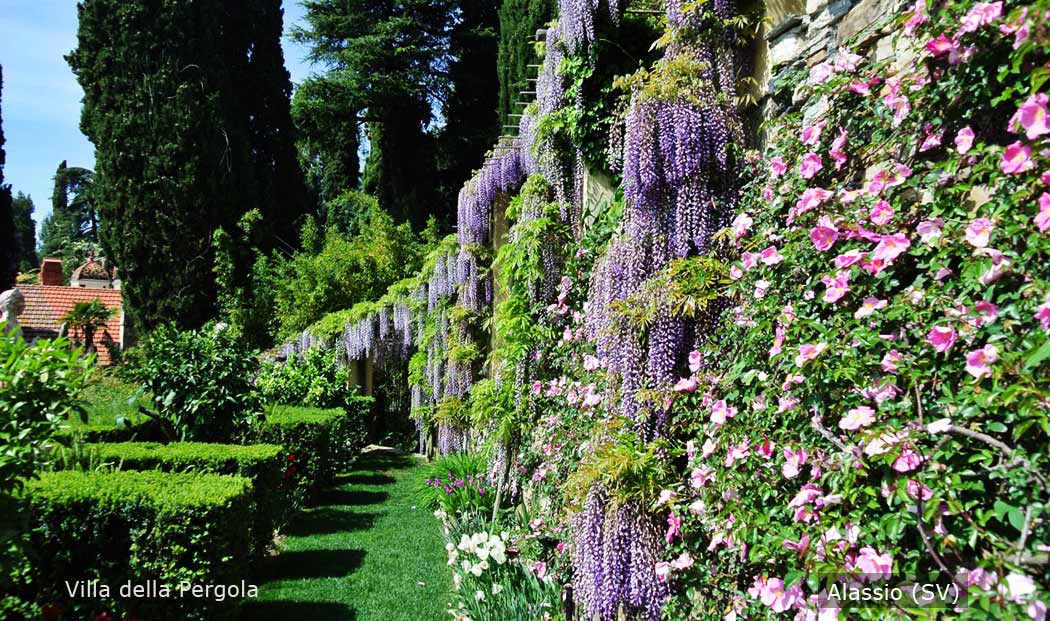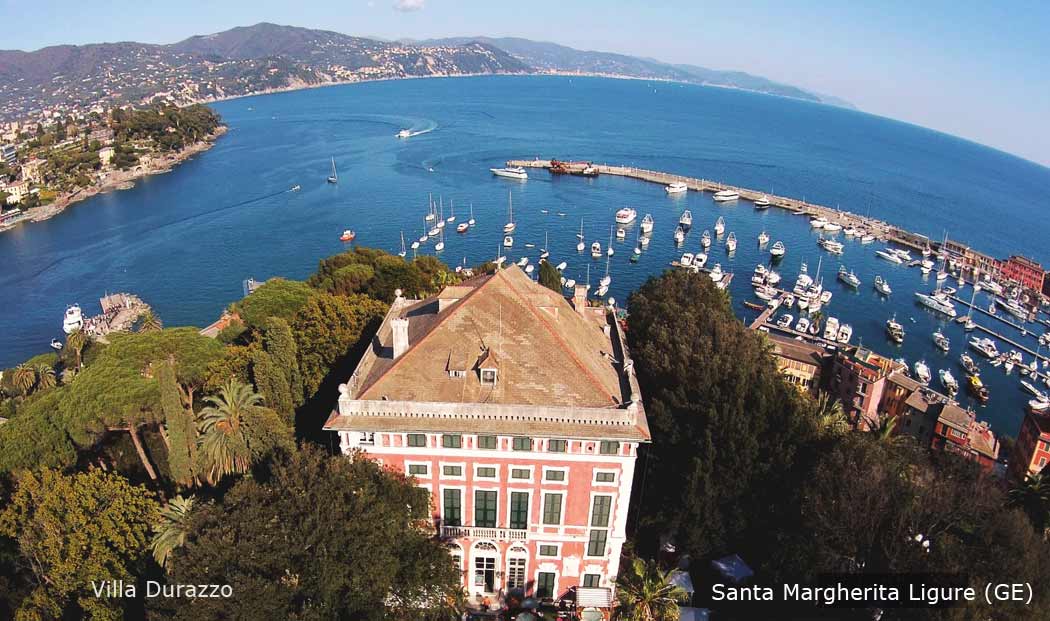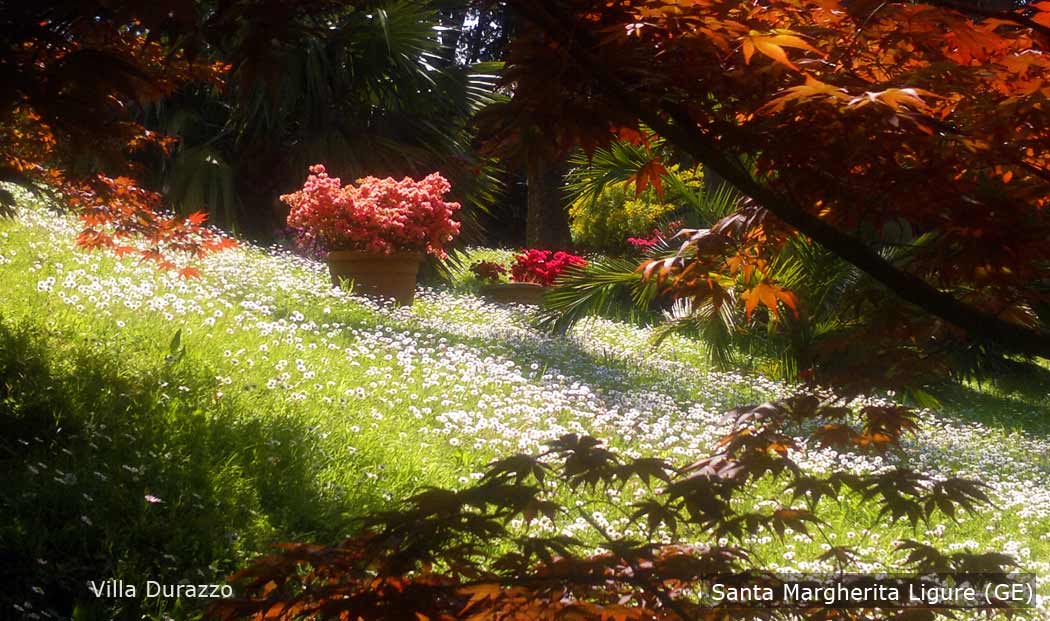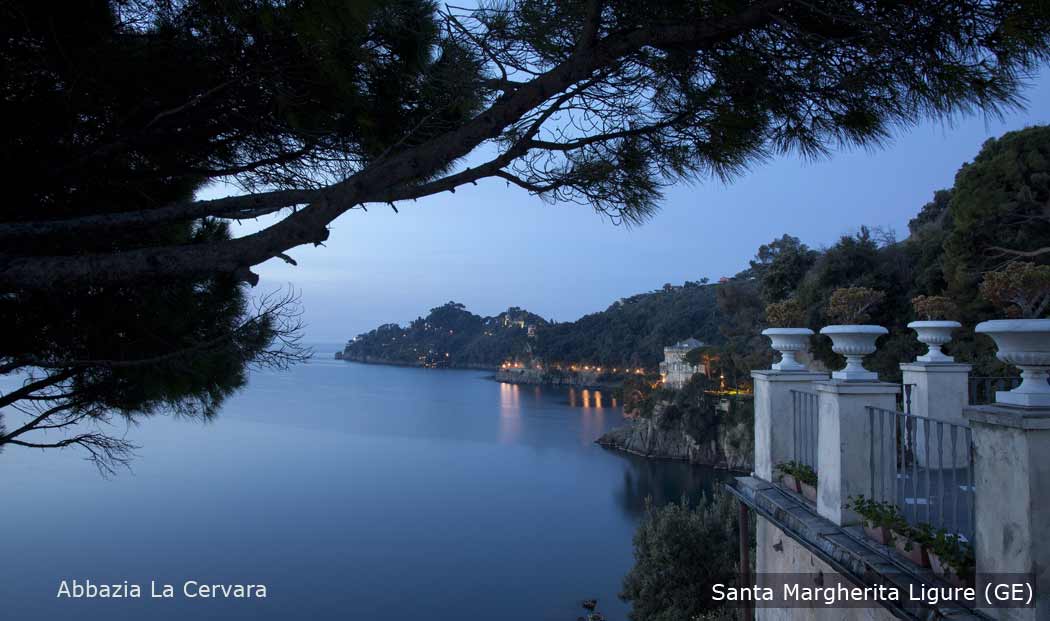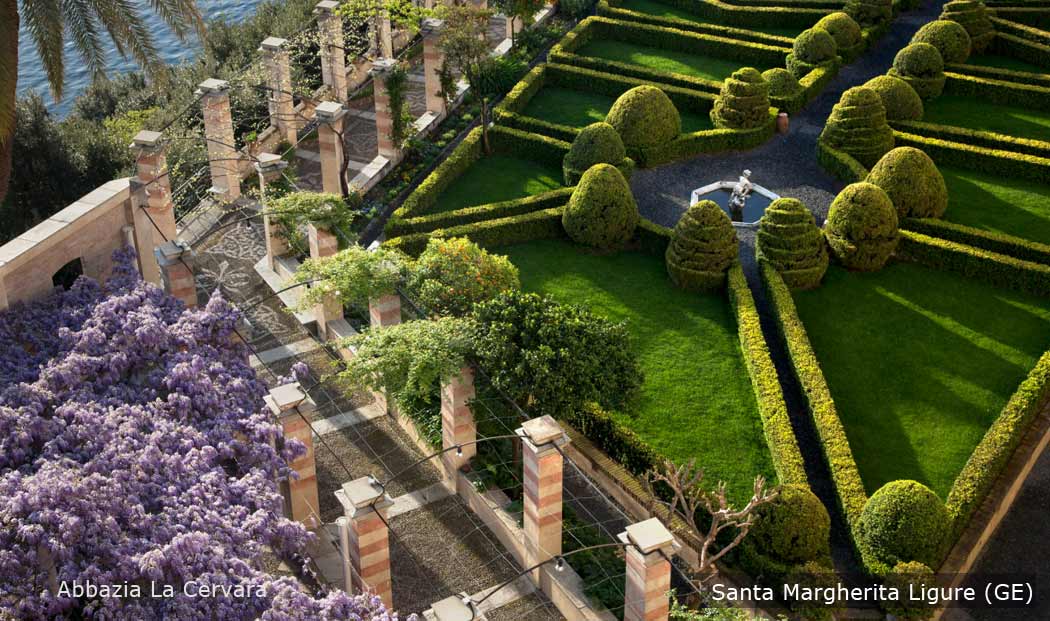Sanremo, the enchanting City of Flowers, which counts among its beauties Villa Ormond and its splendid park. Built at the behest of Swiss merchant Michel Louis Ormond in the second half of the 19th century, it was rebuilt following the earthquake of 1887 to a design by Swiss architect Emile Réverdin. The park, stretching out towards the sea, has a "room-like" layout with very distinctive plant environments: palm grove, cedar area, ancient olive grove, sequence of Ficus trees and grandiose central panorama inspired by the Italian garden theme. The Japanese garden, fruit of the friendship that unites the city of Sanremo and the city of Atami, is of remarkable beauty.
Following the coast, at La Mortola in Ventimiglia are the Hanbury Botanical Gardens designed by Thomas Hanbury to fascinate. Currently managed by the University of Genoa, they have been a protected area of the Region of Liguria since 2000, and boast among their collections those of the Eucaliptus and Acacia genera, as well as bamboos, citrus trees of ancient varieties, roses, peonies, and numerous creepers on the pergolas. Not to be missed are the perfume garden, the Italian-style gardens, and the exotic orchard.
In the Gulf of Alassio, pearl of the western Ligurian Riviera, the Gardens of Villa della Pergola. The Villa della Pergola park was created by the Scottish general William Montagu Scott Mc Murdo in 1875 and passed to Virginia Woolf's cousin, the baronet Sir Walter Hamilton Darlrymple, in the early 1900s. The park received a major boost from 1922, when the owner became Daniel Hanbury, second son of Thomas, owner of the famous Hanbury Gardens. In 2006, a group of friends led by Silvia and Antonio Ricci bought the property to save it from major building speculation and began a tenacious and painstaking restoration of the park.
Immersed in a lush 22,000-square-metre garden, you can lose yourself in different scents and colours in every season. In June and July, it is the blue hues of the more than 400 varieties of agapanthus, a unique collection in Europe, that captivate visitors with their splendid flowering.
Leaving Alassio behind and passing Genoa, in Santa Margherita Ligure are the gardens of Villa Durazzo and theLa Cervara Abbey to enter your heart. One dominates the hill in the centre of the Genoese town and enjoys an enchanting view of the Tigullio Gulf, the other, on the other hand, stretches sheer above the sea between Santa Margherita and Portofino.
Villa Durazzo was built in 1678 as the summer residence of the Durazzo family, whose name it bears, and later sold to the Centurione princes in 1821. In 1919 it passed to Alfredo Chierichetti, who took care of the final arrangement of the park. Since 1973 it has been the property of the Municipality of Santa Margherita Ligure. The oldest part of the park is characterised by a small citrus grove, located on the terrace facing the sea between the boundary wall and the balustrade, the creation of which is due to the Durazzo family, who planted orange, lemon and grapefruit trees in order to create a green backdrop for those coming up from the sea towards the villa. The layout of the 'Italian garden', on the other hand, is the work of the Centurione family who took over from the Durazzo family in the 19th century.
La Cervara Abbey, founded in 1361 by a small nucleus of Benedictine monks, in its seven centuries of history has been the scene of alternating periods of splendour and decadence, reflected in the progressive architectural transformations of the complex. Of particular note is the monumental Italian-style garden, the only one preserved in Liguria, which extends over two levels, gracefully connected by pergolas and steps.

